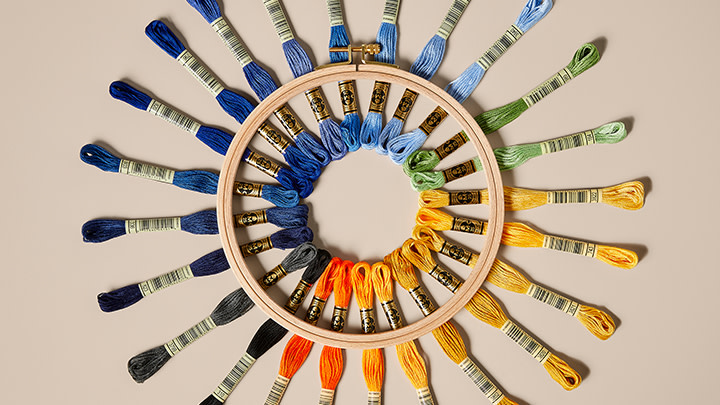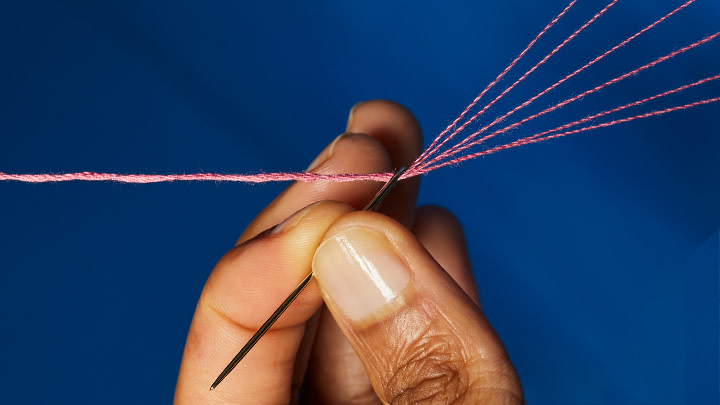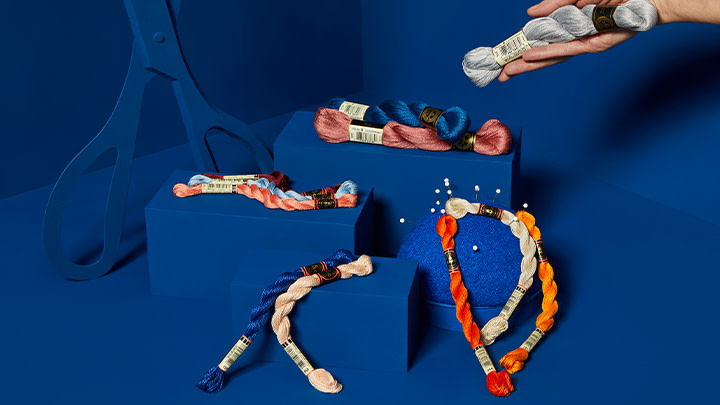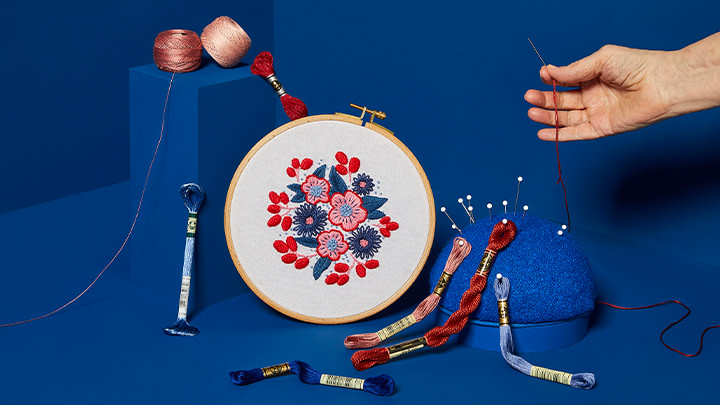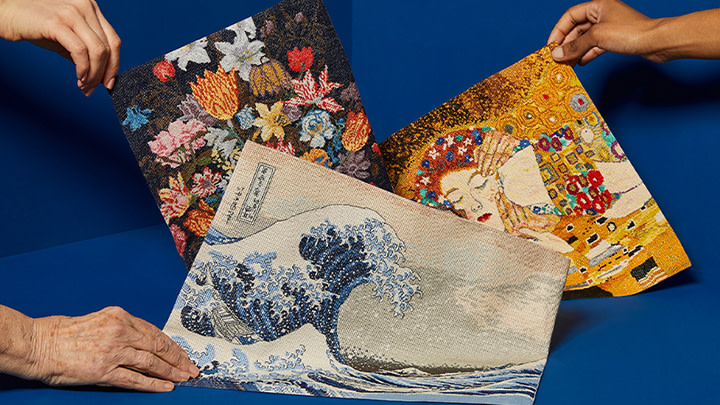Many needlework projects never need to be washed but embroidered clothing and homewares may need an occasional clean or regular washing. If you need to wash your needlework you need to take into account the properties of the thread and the fabric you have used. In this article we describe the best ways to wash or care for your finished needlework so you can enjoy it for many years to come.
If you try to stitch in a clean environment, wash your hands before you begin and cover your project whilst you are not working on it, you may never need to wash your needlework. As you stitch, the natural oils from your fingers will transfer onto your work and in our busy lives it’s not uncommon for dust, pet hair etc to find its way onto our precious makes. Carefully washing your finished piece can deliver a better result as it removes dirt and helps restore the beautiful sheen of the threads you have used. The good news is that DMC embroidery threads are tested rigorously to ensure they are colorfast and fade resistant so they wash extremely well.
If you want to wash your project remember to take into account the washing instructions for the fabric, applique patches or other embellishments you have used as well as the thread. It may not always be possible to wash needlework.
How to Wash Cross Stitch
Do
Check the washing instructions for the fabric you are using.
Rinse the piece under clean cold running water, then mix in a small amount of non-biological detergent and gently hand wash.
Rinse several times in cold water until the water runs clear.
Stop washing if water becomes colored when rinsing.
Roll the piece between two clean towels squeezing gently without wringing.
Unroll the towel and lay your piece on a dry towel. Let your cross stitch air dry until damp.
To iron your washed piece, place the cross stitch face down between two clean towels (the towels protect your stitches from being crushed) and press lightly with a warm iron.
To remove creases or fold lines use the steam setting on your iron.
Don't
Don’t wash your project with other embroidery or laundry items.
Don’t use biological powder, harsh detergents, or chlorine bleach.
Don’t use protective coating sprays or other products of this type on your cross stitch, as they may cause a chemical reaction with the thread dye.
NEVER use a hot iron.
It is NOT recommended that your cross-stitched piece be dry-cleaned.
Tip: Washing embroidery where the design is pre-printed on the fabric is not recommended, due to the nature of the beautifully printed designs.
Tip: If your fabric does get marked, gently spot clean it by blotting the stain with a clean cloth using a mild non biological powder. DO NOT immerse the designs in water, and DO NOT dry-clean them.
Try Dusting First
If your needlework has just got a bit dusty you can try using a vacuum to clean it first which might remove the need to wash it altogether. To do this, stretch a piece of nylon stocking or mesh over the nozzle of your vacuum hose. Carefully vacuum, taking care to keep the nozzle just above the piece.
Do
Gently vacuum tapestry and needlepoint homewares to remove dust.
If required take your tapestry and needlepoint piece to a professional dry cleaner.
Don’t
Try to use soap and water to wash pieces.

